Marriage is fixed and the preparations begin with making a guest list and printing of marriage card ! How should a marriage invitation card ideally be ? Let us find out more from this article.
1. Marriage invitation card should be sattvik !
Nowadays, many have made marriage a status issue. This is the reason for the wasteful expenditure in a marriage. It begins from printing of exorbitantly priced marriage invitation cards like those with pieces of art, tinged with fragrance etc.. Invitation cards should be sattvik rather than expensive.
To achieve this
A. A full picture of Shri Ganapati in which He is seated, as described in the scriptures, should be used. The picture of Shri Ganapati (printed on the invitation card) many a times denigrates the Deity (For example, picture of only the head of Shri Ganapati or picture of His image created with leaves and flowers).
B. In the beginning of the invitation card, the Names of the Deity of worship, Kuladevata (Family Deity), Gramdevata (Village Deity) etc. should be mentioned.
C. The invitation card should be printed in the mother tongue or in any other national language and not in English.
D. The art work on the invitation card should be sattvik.
E. Contents of the invitation should be grammatically correct and the use of foreign language words should be avoided.
F. The invitation card should include matter about education on Dharma or that pertaining to the Nation and awakening of Dharma.
Many a times, we wonder if it is appropriate to print pictures of Deities on invitation cards? The following explanation will make this clear.
2. Is it appropriate to print pictures of Deities on invitation cards?
‘It is a practice to print pictures of Deities on marriage invitation cards. Often the Name of the Deity is printed alongside. After the marriage, these invitation cards are thrown into the dustbin or elsewhere, resulting in denigration of the Deity. Based on the spiritual principle that ‘word, touch, form, taste, odour and their Shakti (Divine Energy) co-exist’, wherever there is a form or Name of a Deity, the Principle of that Deity does exist. Therefore, the thought that pictures of Deities should not be printed on marriage invitation cards or greeting cards is very natural. However, the benefit derived from the Principle of the Deity from its picture is more than the spiritual harm taking place due to its denigration. This will be clear from the explanation given below.
|
Pictures of Deities |
Proportion of Creation, Sustenance and Dissolution (%) |
|---|---|
| 1. Creation | 20 |
| 2. Sustenance | 50 |
| 3. Dissolution | 30 |
| Total | 100 |
Making marriage invitation cards with pictures of Deities and using them amounts to Creation and Sustenance. Their respective proportion of 20% and 50% totals 70% (which means that the benefit from the Deity Principle is so much). In comparison, discarding marriage invitation cards with pictures of Deities or their becoming unusable (getting spoilt) is 30%. This means that the exact benefit derived from pictures of Deities is (70-30=) 40%. Additionally, Creation and Sustenance last longer than Dissolution, meaning Dissolution takes place faster (the duration of loss is small); for example, when denigration of Deities takes place, the Deities there cease to exist. Considering these facts, it can be concluded that printing pictures of Deities on marriage invitation cards is appropriate. However, when these cards are no longer in use, it is appropriate to immerse the pictures of Deities on them in flowing water.’
– H.H. Dr. Athavale (25th October 2006)
Sample of sattvik Wedding Invite
(Note : These samples are in Marathi language.)
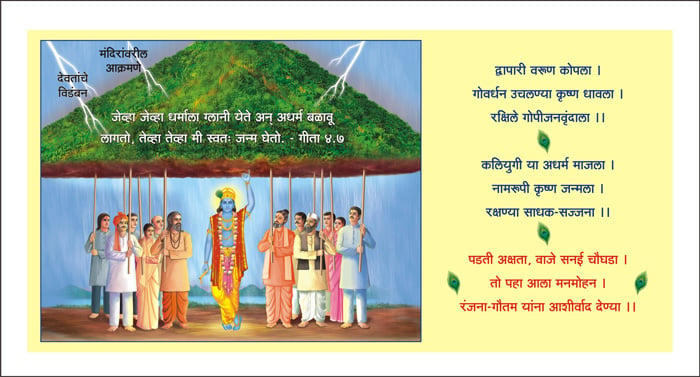
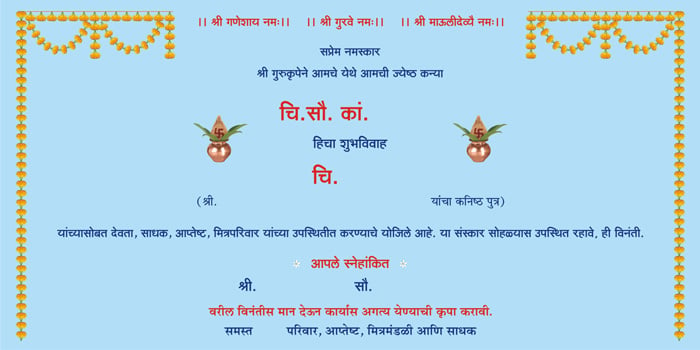
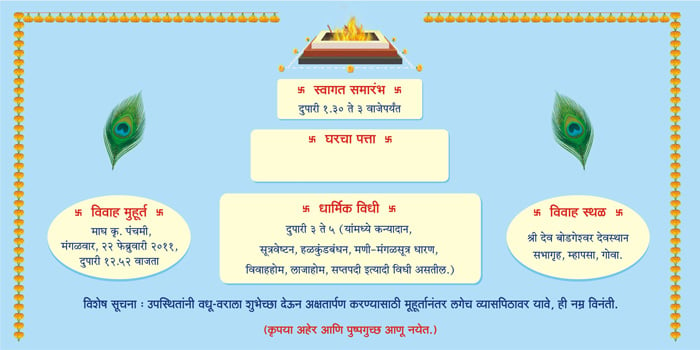
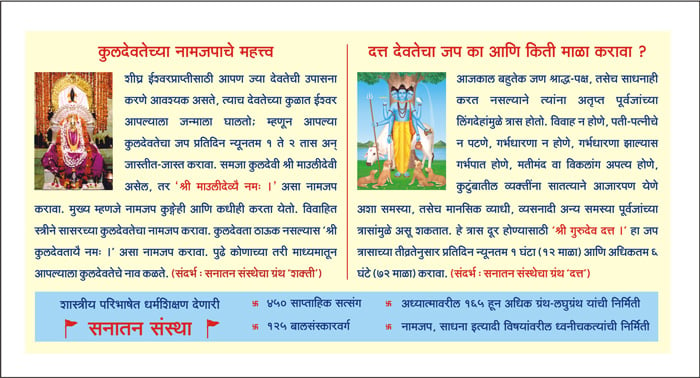
Back side of envelope
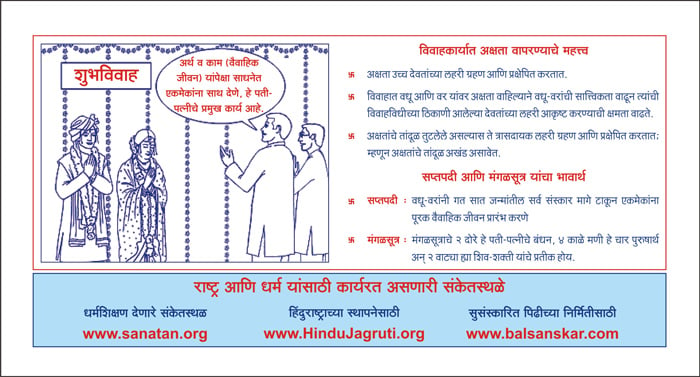
Front side of envelope
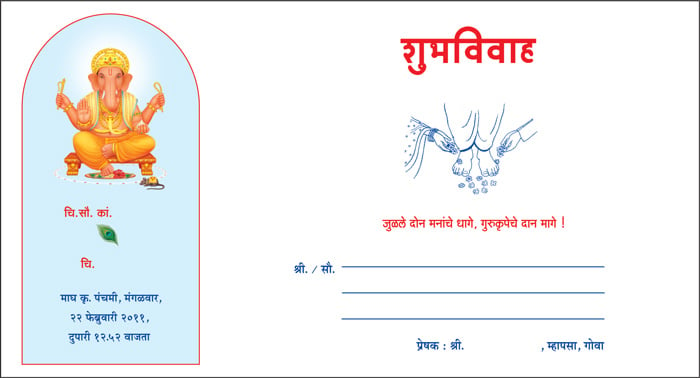
(Right from the creation of anything to its destruction or till the time it ceases to exist, there are three parameters associated to it – Creation, Sustenance and Dissolution. In context to the marriage card, if all together would be 100 %, then proportion each of the parameter is given in above explanation and its benefit to the individual.)

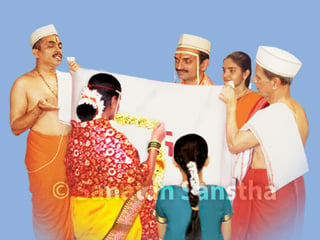 Spiritualization of the auspicious ceremony of marriage
Spiritualization of the auspicious ceremony of marriage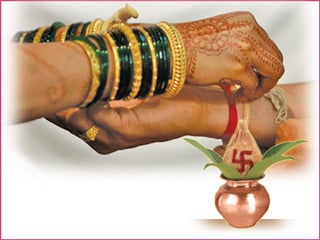 Importance of marriage sanskar – A spiritual perspective
Importance of marriage sanskar – A spiritual perspective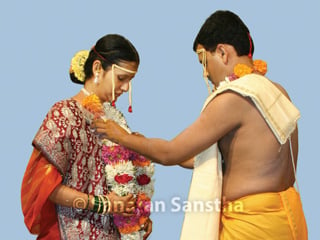 What should the bride and groom wear ?
What should the bride and groom wear ? Importance of matching horoscopes of the prospective bride and groom
Importance of matching horoscopes of the prospective bride and groom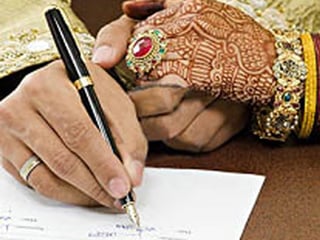 Registered Marriage : Yes or No ?
Registered Marriage : Yes or No ?